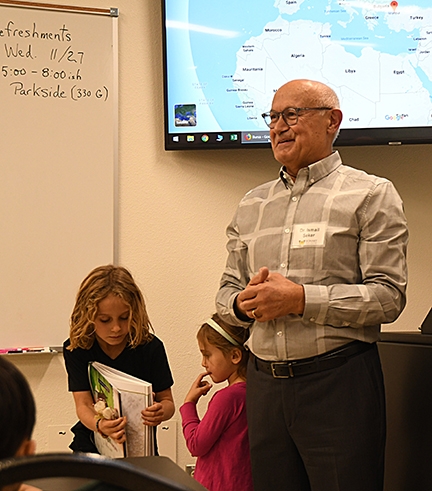
Silkworm moth expert Ismail Seker, a Turkish medical doctor and author of a book showcasing his hobby, displayed the eggs, larvae, pupae, adults, as well as silk fabric, and fielded questions from the audience.
Seker showed his newly produced 13-minute video detailing the history of the silkworm moth and its life cycle. The crowd marveled at his macro photography and exquisite videography. Assisting him at the presentation were his grandson, Emre, 7, and granddaughter, Ruya, 4. Their father, Erkin Seker, is an associate professor in the UC Davis Department of Electrical and Computer Engineering.
The silkmoth, Bombyx mori, domesticated in China more than 5,000 years ago, belongs to the family Bombycidae, The life cycle: egg, larva, pupa and adult. Their food: mulberry leaves.
The caterpillars are celebrated for spinning silk; each cocoon is comprised of a single strand of raw silk from 1000 to 3000 feet long. It takes about 2000 to 3000 cocoons to make a pound of silk. Worldwide, silkworms produce some 70 million pounds of raw silk, requiring nearly 10 billion cocoons.
The adults cannot fly, and neither eat nor drink. They mate, lay eggs, and the cycle continues.
Seker donated cocoons for the Bohart Museum's family craft activity and watched visitors gleefully turn the cocoons into decorated finger puppets.
Among the visitors: 40 students from the Samuel Jackson Middle School and the James Rutter Middle School, Elk Grove Unified School District, in a program offering special educational opportunities and mentoring. The youths wore t-shirts lettered with "The Power of Us" on the front, and "Resilient, Authentic, Passionate" on the back. Academic mentor Keishawn Turner said the group toured the campus, had lunch, and ended the day by attending a UC Davis football game.
(More photos of the open house pending in the next Bug Squad)
The Bohart Museum is located in Room 1124 of the Academic Surge Building on Crocker Lane. It houses a global collection of nearly eight million specimens. It is also the home of the seventh largest insect collection in North America, and the California Insect Survey, a storehouse of the insect biodiversity. The Bohart Museum maintains a live "petting zoo," featuring Madagascar hissing cockroaches, walking sticks or stick insects, tarantulas, and praying mantids. The museum's gift shop, open year around, includes T-shirts, sweatshirts, books, jewelry, posters, insect-collecting equipment and insect-themed candy.
Director of the museum is Lynn Kimsey, professor of entomology at UC Davis. The staff includes Steve Heydon, senior museum scientist; Tabatha Yang, education and outreach coordinator; and Jeff Smith, who curates the Lepidoptera (butterflies and moths) section.
More information on the Bohart Museum is available on the website at http://bohart.ucdavis.edu or by contacting (530) 752-0493 or bmuseum@ucdavis.edu.
Attached Images:
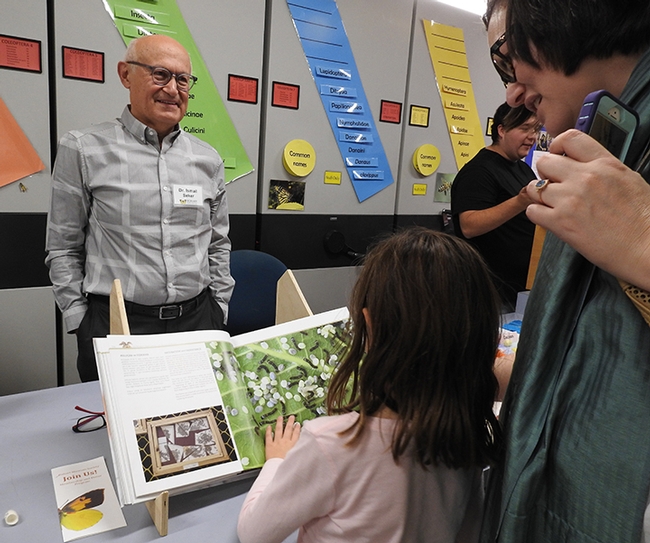
Silkworm moth expert, İsmail Şeker, a Turkish medical doctor and author of a silkworm moth book, answers questions from the crowd at the Bohart Museum open house. (Photo by Kathy Keatley Garvey)
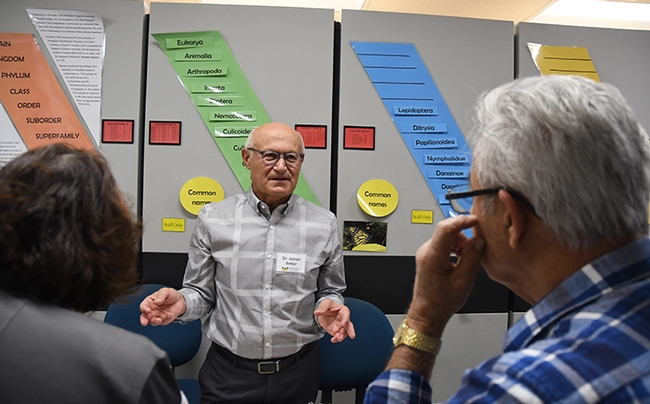
The adult silkmoth cannot fly, İsmail Şeker tells the Bohart Museum of Entomology visitors. (Photo by Kathy Keatley Garvey)
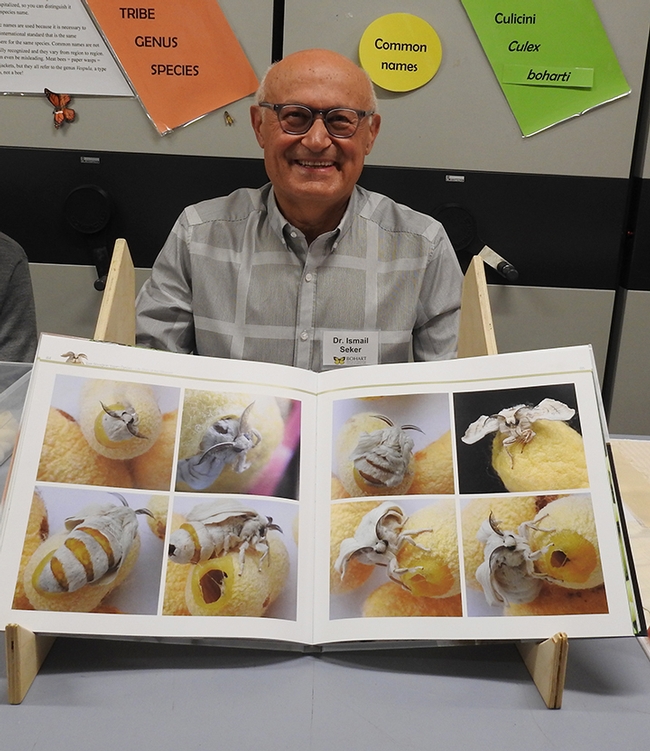
İsmail Şeker with his book containing his macrophotographs.(Photo by Kathy Keatley Garvey)
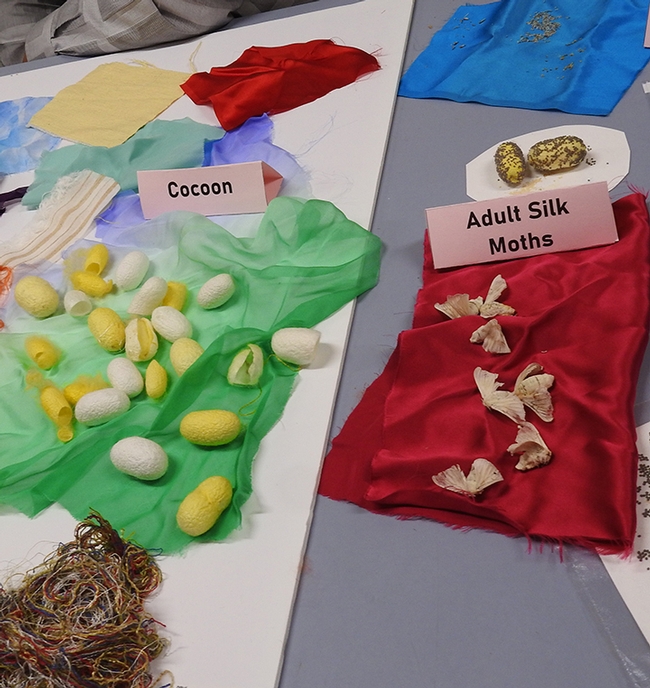
The silkworm moth display included eggs, larvae, pupae and adults. (Photo by Kathy Keatley Garvey)
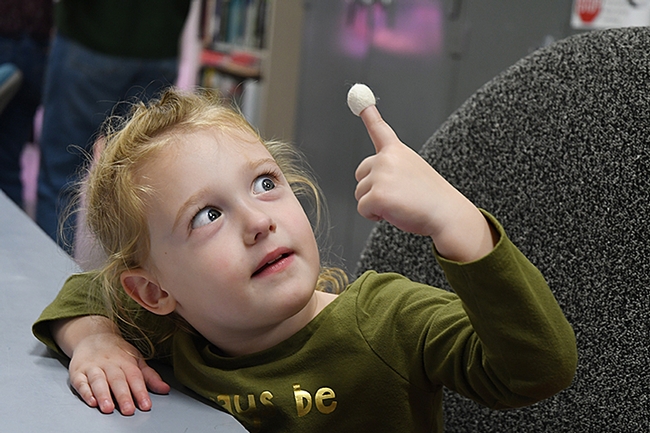
Cora Tatum, 3, of Davis, checks out her newly created finger puppet--a silkworm cocoon. (Photo by Kathy Keatley Garvey)